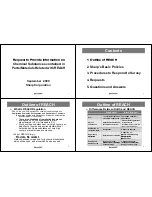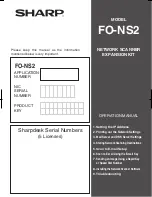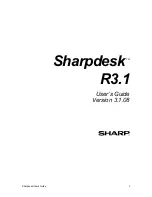
-- Call Detail Reporting Guide -- September 2000 -- Page 17 --
5.3 Reporting Fields Glossary
CDR Timestamps and Dates
The CDR data schema is provided with basic definitions. As with past OE releases, the StartTime,
EndTime, and other timestamps in the OE 4.0 CDR database are in seconds and are offset numbers from a
standard industry reference point of January 1, 1970 UTC. A reporting tool must compute the actual date
and time for use in reports. When writing a program from C, the standard function call would be to: ctime
(&1time) where &1time points to the UTC value (for example, 768027063. The call returns the Unix time
and date (Wed May 04 04:51:03 1994).
Start time
•
Start time can vary depending on the use and configuration of AltiWare for CO trunks.
•
Start time will be a few seconds (2 typical) after incoming trunk seizure if the incoming trunk type
is a tie trunk or an analog or T1 C.O. trunk not supporting Caller ID or ANI signaling.
•
Start time will be a seven (7secs) or more if the incoming analog or T1 trunk supports
callerID/ANI since the Central Office (C.O.) first sends these digits between the first and second
ring cycles before the target device is to be connected. This is good, since carrier billing does not
start until the target device answers.
•
Start time for outgoing trunks is immediately when AltiWare attempts to seize an outgoing trunk;
hence even for outgoing calls which hit an all trunks busy signal.
Terms used in the data schema and in reporting
:
Account Code
A number entered by a caller to represent how the call should be
tracked or billed
Agent
A service representative at a company who consistently handles
customer inquiries of all types.
Agents Signed On
The number of agents, signed on to the phone system to be agents,
using their phone or Center 4.0 to sign-on.
All Trunks Busy
An All-Trunk-Busy record should have dialing extension in party 1, dialing
number in
Trunk Remote Number.
If call is made by out call routing, out call
route and overflow routes should be set. All trunks busy means that there were
no free outgoing trunks available for a given route.
Analog
Telephone lines going to the centeral office (trunks) and/or telephone
lines going to the phone systems desktop phonesets using standard
analog communciation; voltage variations represent voice signals.
ANI
Automatic Number Identification : the phone number of the person or
site making a phone call to the system. ANI is provided on T1/PRI
circuits only, and represents the billing number of the caller, not
necessarily the phone number; for example, ANI for people calling from
a company.
ASA
Average Speed of Answer: the amount of time, on average, that a
company wishes to answer incoming calls; also, the actual average
amo unt of time it takes before a caller is answered by an agent.
Auto Attendant Duration
Auto Attendant Duration is the amount of time a caller is listening and
responding to call processing steps in the phone system auto attendant
process.
Average Call Duration
Average Call Duration is average the amount of time a calls are taking
from phone system answer to phone system disconnect.
CallerID
The phone number of the calling party. CallerID differs from ANI in that
CallerID is the phone number of the phone from which the caller is
calling as opposed to the billing number for the phone. If a caller is
calling from a business, the CallerID will be different from the ANI
number in most cases.
















































